Manage Custom Metadata
Managing Custom Metadata is available in the Governance plan and higher tiers. See the pricing page for more details.
In the context of Microsoft 365, the metadata in Syskit Point provides detailed information on Microsoft Teams, Microsoft 365 Groups, Sites, and OneDrive.
Essential metadata is natively available in Microsoft 365 and collected by Syskit Point during the sync process.
Here are some examples of such metadata:
- The Microsoft Teams Owner
- The date of creation for a site
- The storage used by a site
- And other useful information
With Syskit Point's custom metadata feature, you can:
-
Leverage custom metadata to expand on the existing information and better describe Microsoft Teams, Microsoft 365 Groups, Sites, and OneDrive concerning your business processes and policies.
-
Organize and find workspaces, and generate reports based on custom metadata.
-
Provision new workspaces from templates that define the custom metadata to be specified.
Create Custom Metadata
This section will explain how to set up custom metadata in Syskit Point.
To start, take the following steps:
- In the main menu, click Settings (1)
- Select the Custom Metadata (2) option in the Governance category
- This screen provides insight into what custom metadata has already been set up, along with the option to create new custom metadata.
- Click the Create New (3) button to create new custom metadata.

Once the create new metadata dialog opens, fill in the following information.
- Metadata Name (1); the name of the metadata.
- Description (2); the description of the metadata for end users.
- Enable collaborators to change the created metadata (3) by checking the Allow collaborators to change this metadata value option.
- By default, this option is disabled.
- When enabled, owners can modify metadata on their workspaces.
- Include this metadata in the SharePoint search index (4).
- Selecting this checkbox ensures that the custom metadata you've defined is included in SharePoint Online Search, which means that SharePoint sites can be searched using the custom metadata you've specified.
- Select the data type (5) of the new metadata under the Customize Field.
- In the dropdown menu, there are several data types to choose from
- Text
- People
- Date
- Dropdown
- Yes/No
- Number
- In the dropdown menu, there are several data types to choose from
- Use the null text (6) area to add a short hint describing the input field for end users.
- When satisfied, click Confirm (7) to save the metadata definiton.
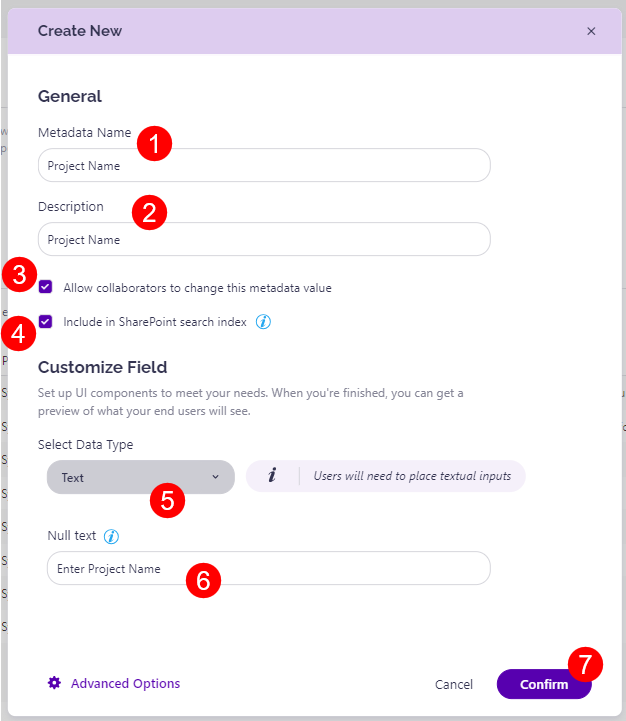
Hint! To connect to metadata from your environment, click the Advanced Options action and insert the property bag key in the designated space.
Change Custom Metadata
After setting up custom metadata, the information can be changed directly from a specific workspace.
To change the custom metadata that has been set up on workspaces, select Sites or Microsoft Teams & Groups from the Home page.
- On the Sites overview screen, select one or multiple workspaces (1) to edit their metadata.
- Click Manage Metadata > Change Metadata (2) option available on the right side of the screen.
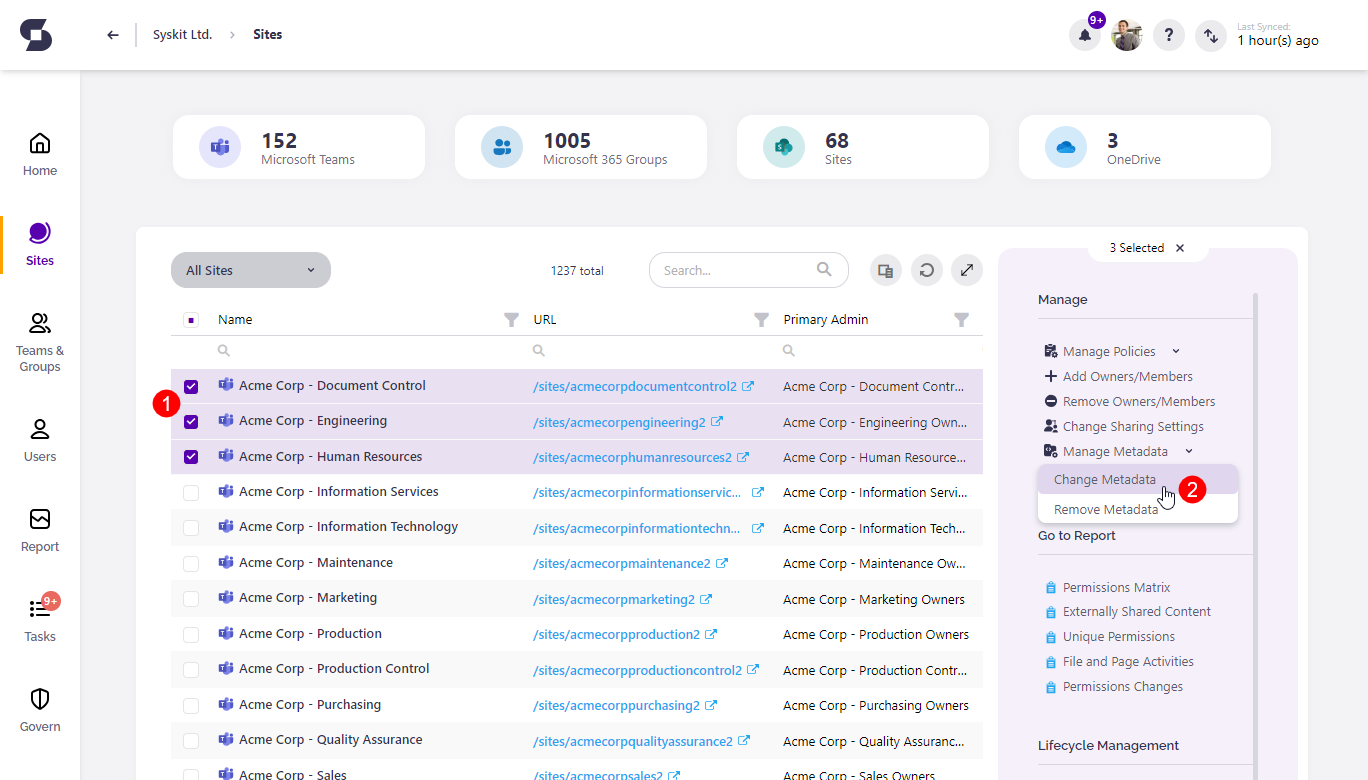
On the Change Metadata dialog:
- Specify custom metadata (1) by clicking the Change Another Column action
- After defining a value for a custom metadata, click Save
- Edit (2) or Remove (3) custom metadata you want to change
- Click Complete (4) when finished
- This will start the process of changing the custom metadata, and once completed, the information input will be displayed under the selected workspaces.
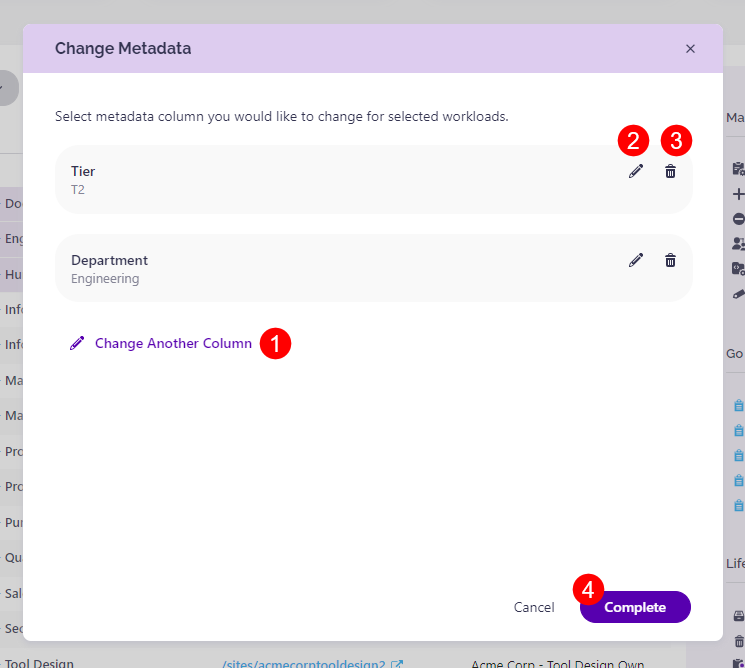
Remove Custom Metadata
To remove custom metadata:
- On the Sites overview screen, select one or multiple workspaces (1) to remove the custom metadata.
- Click Manage Metadata > Remobve Metadata (2) option available on the right side of the screen.
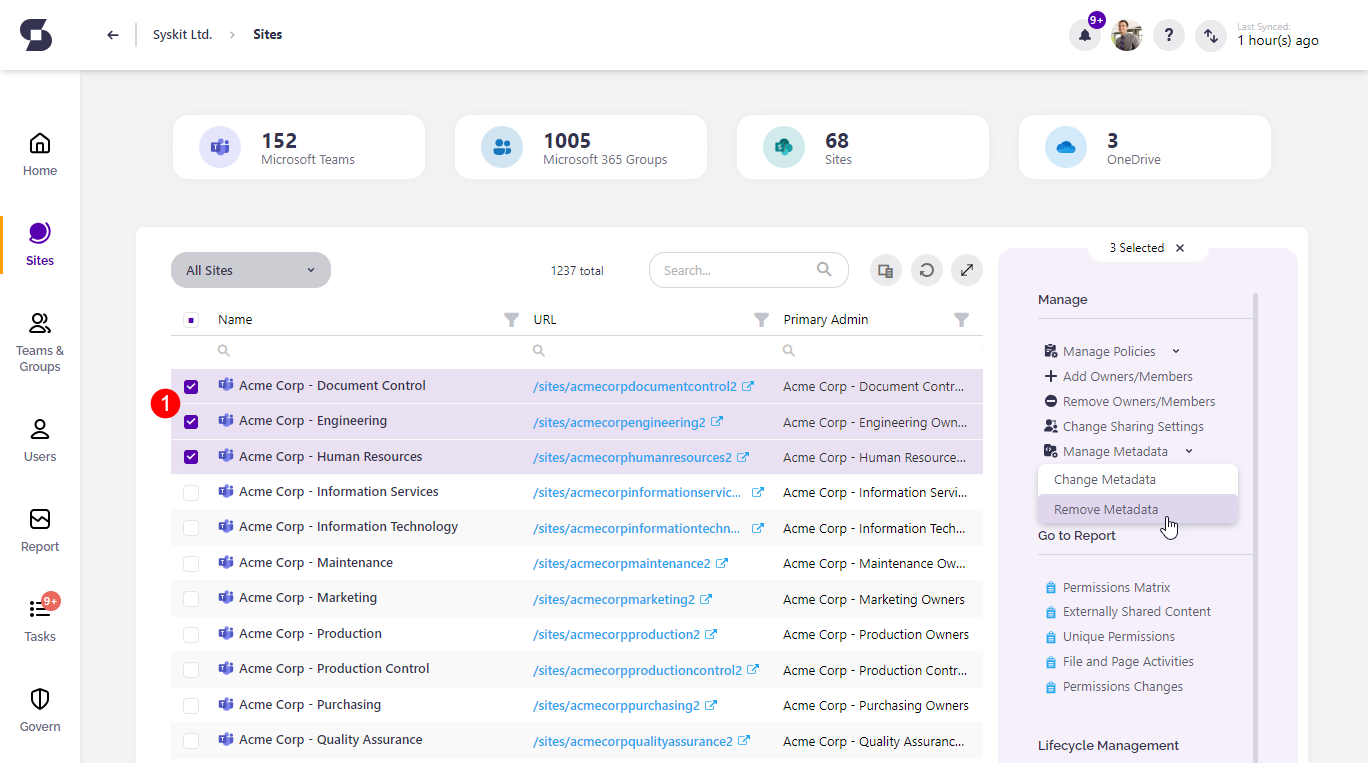
Remove Metadata dialog opens; select the metadata you want to remove, and click Remove.
Filter Workspaces by Metadata
When generating a report, you can filter out workspaces with desired custom metadata values:
- Go to Reports and select a report to generate.
- On the Selection step, use the Column Chooser (1) to select custom metadata, thus making the custom metadata column and values visible on the Selection step.
- Once the custom metadata column is added, use the filter dropdown menu (2) in the custom metadata column to filter and show workspaces with selected metadata values.
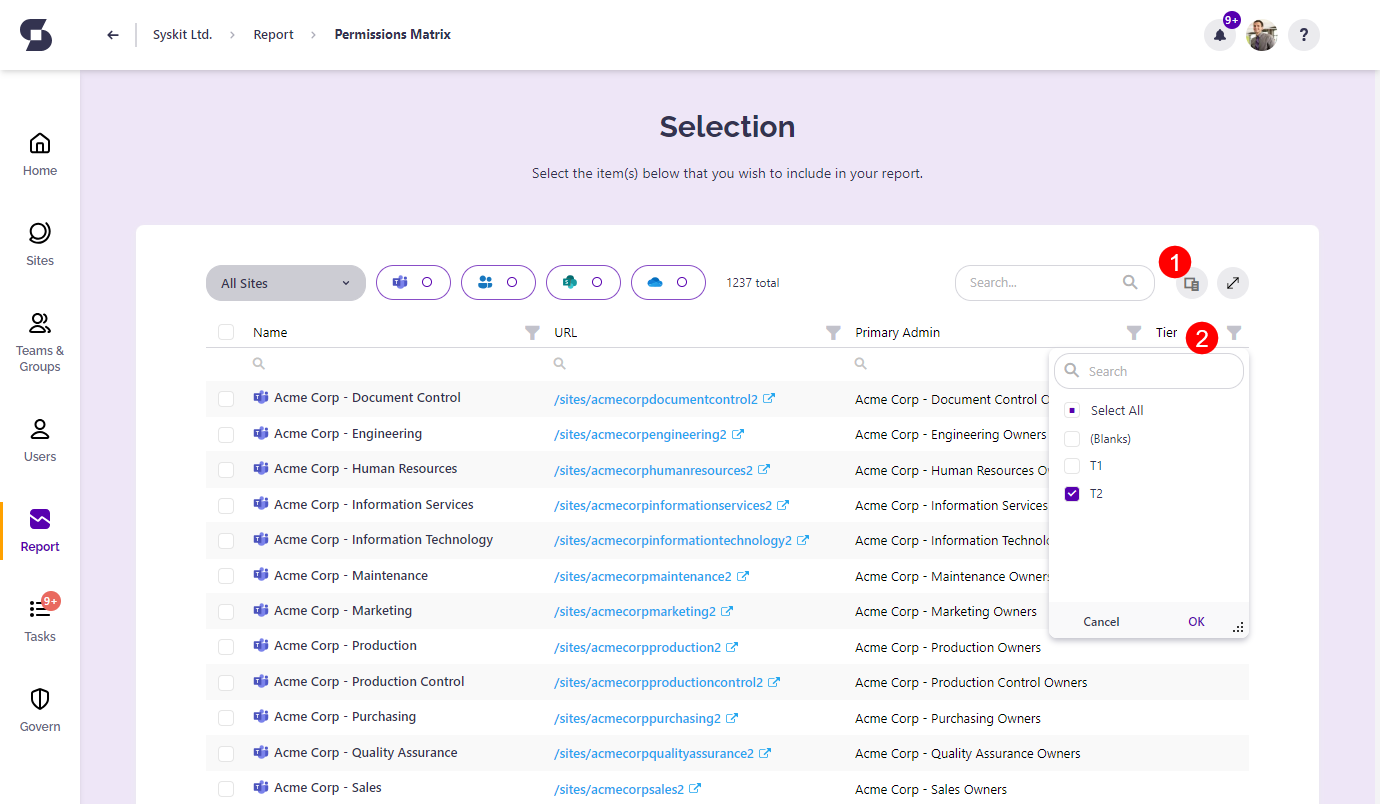
Workspaces with selected custom metadata values (3) are displayed.
- Select (4) one or more of the filtered workspaces to include in the report.
- Click Run Report (5) to generate the report for selected workspaces.
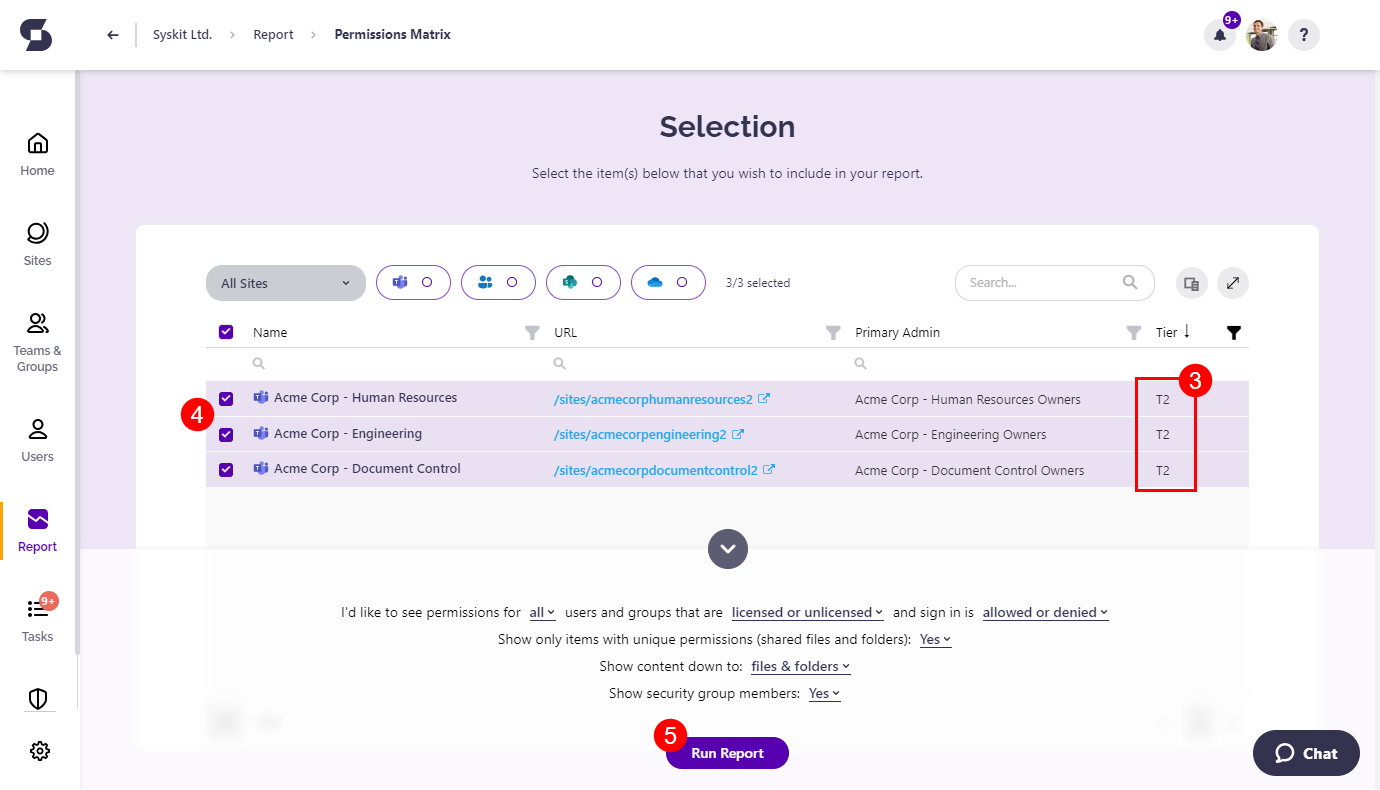
This can be applied to any reports from the Report section that include Sites, Microsoft Teams & Groups, and OneDrive.